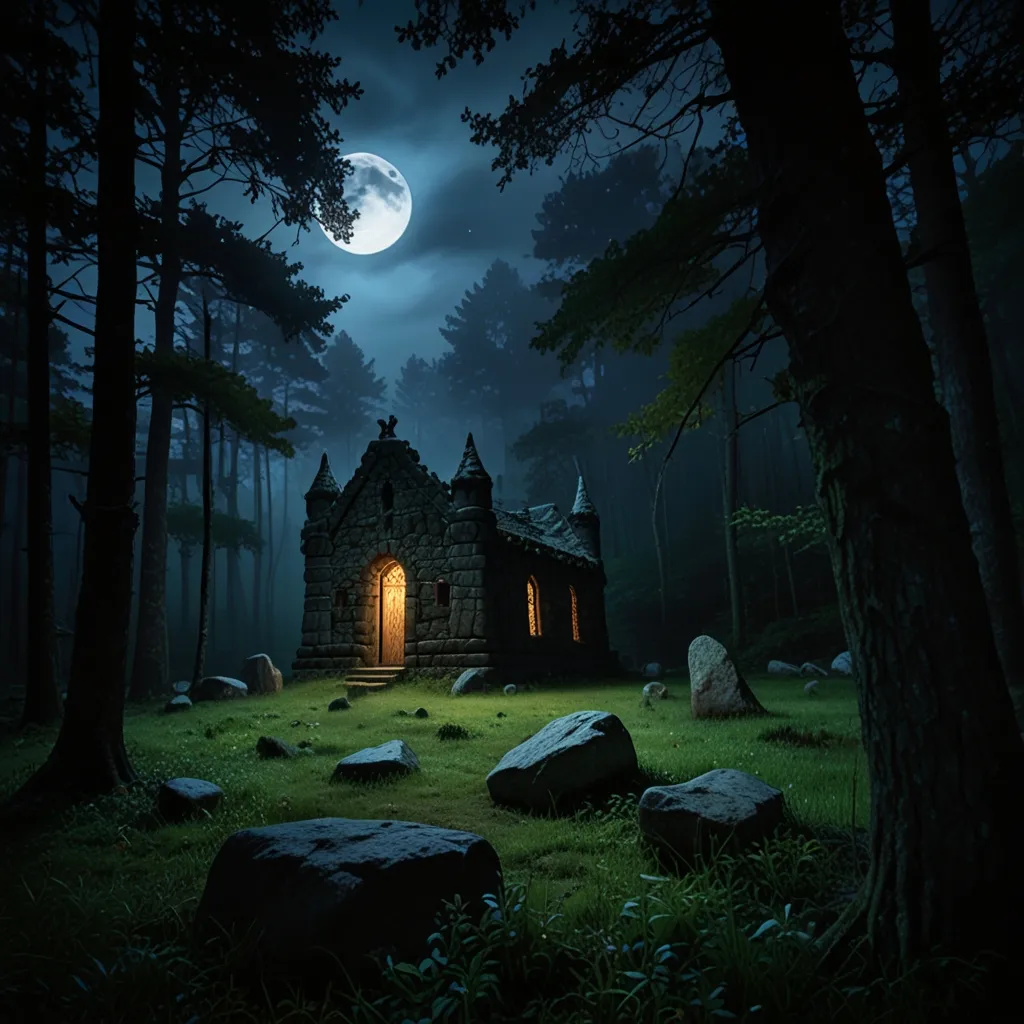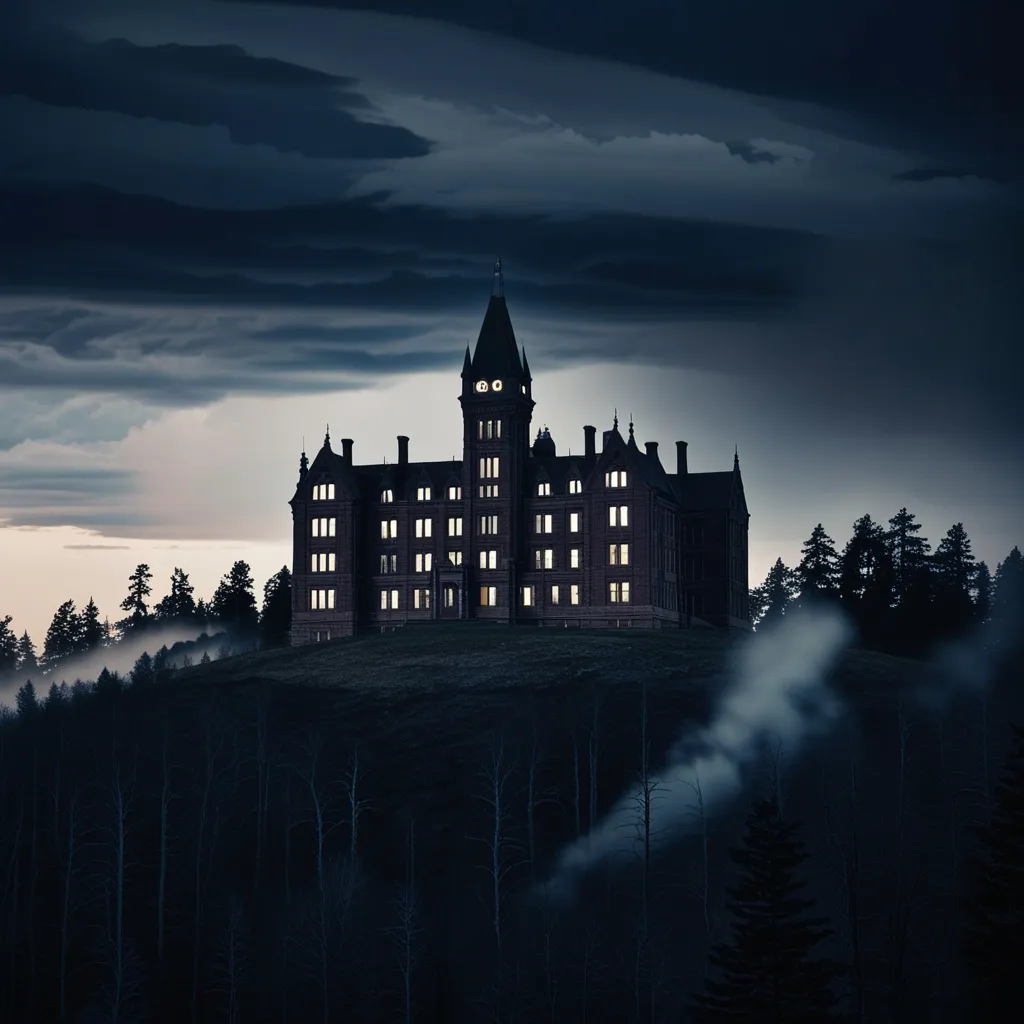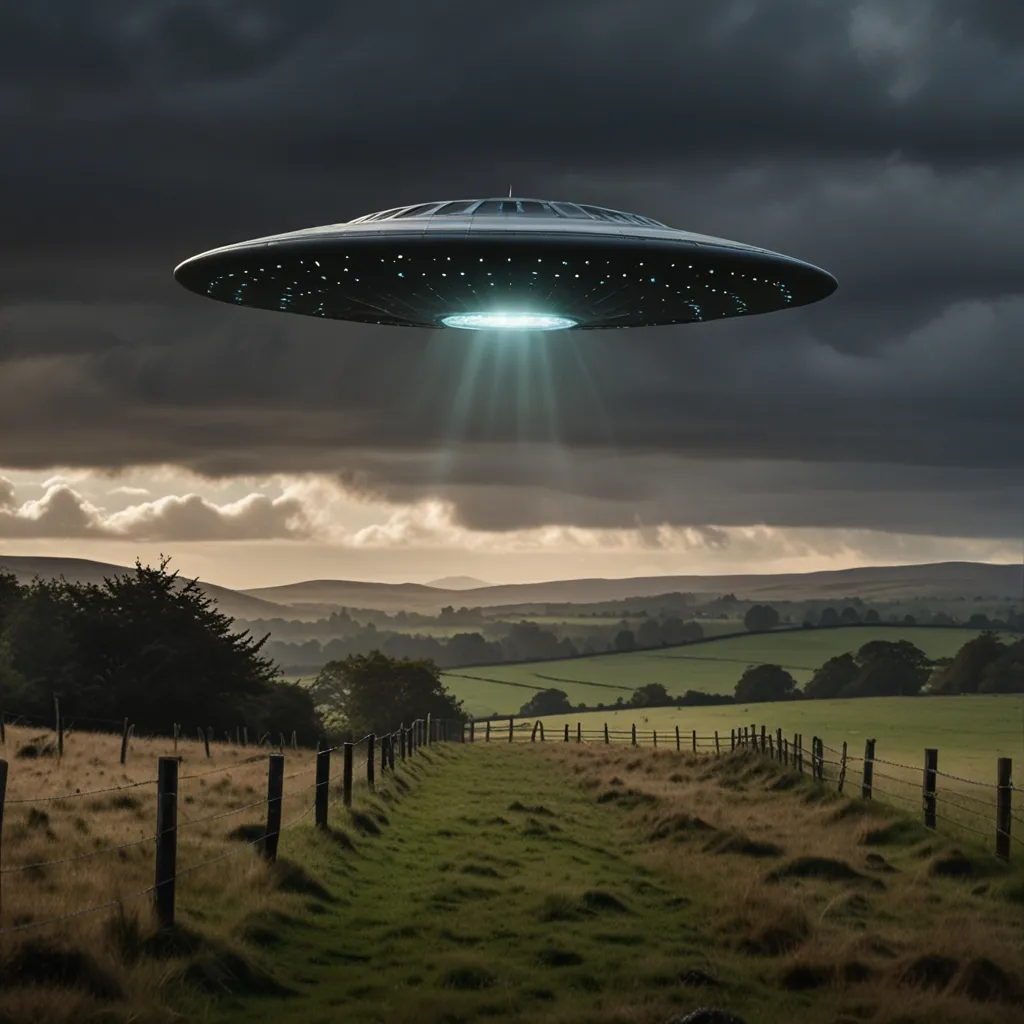In the mysterious realms of the Southern Appalachian Mountains, spanning Georgia and stretching up into North Carolina, lies an incredible historical puzzle that has intrigued many—a series of stone structures, some dating back hundreds, and others possibly thousands of years. These ancient formations have baffled archaeologists who cannot definitively determine their creators. Yet, the Cherokee people have a fascinating legend that offers insight into these constructions, attributing them to the Moon-eyed people.
The Moon-eyed people, as per Cherokee lore, were characterized by their fair skin, light hair, and large blue eyes, so sensitive to sunlight that they lived in the shadows of caves during the day and only came out at night. This nocturnal lifestyle, coupled with their unique appearance, led to their otherworldly name. But who were these mysterious people? As the story unfolds, theories become entangled with the rich tapestry of exploration history, sending us back in time to an era when the world was vast and uncharted.
Christopher Columbus is often credited with “discovering” the New World; however, many believe that others were here long before his infamous voyage. Norse explorer Leif Erikson is thought to have set foot in what is now Newfoundland, Canada, around 1000 A.D., with archaeological revelations in the area supporting this theory. Another adventurous legend involves Saint Brendan, an Irish monk rumored to have discovered lands abundant with greenery, possibly referring to Canada’s scenic east coast. Yet despite these tales, none of these explorers established lasting settlements, their attempts thwarted by hostile native encounters, forcing them back across the seas.
Another captivating narrative revolves around Prince Madoc of Wales, son of Welsh King Owain Gwynedd. Following his father’s death in 1169, civil unrest erupted in Wales. Disinterested in the chaos, Madoc gathered fellow explorers and sailed westward, purportedly landing in Mobile Bay, Alabama. Enthralled by the new land, he returned to Wales for more ships and colonists, heading back towards America in 1171, never to be heard from again.
Fast forward five centuries to 1666, when a Welsh minister, Morgan Jones, ventured into the American wilderness to spread his faith. Captured by a tribe in present-day South Carolina known as the Dog, Jones faced execution. In a bizarre twist of fate, the tribe’s leader, a light-skinned man with piercing blue eyes, spared Jones, speaking to him in Welsh. This inconceivable encounter suggested a thread of Welsh heritage among Native American tribes, sparking a wildfire of speculation that would persist for years.
Adding fuel to this historical enigma, similar tales from other sources, like sailor Stedman who claimed to encounter Welsh-speaking tribes in the 1660s, garnered attention. This spurred ambitious expeditions in pursuit of these so-called Welsh Indians, with notable figures such as Virginia Governor Robert Dinwiddie and even the famed explorers Lewis and Clark receiving orders to seek out light-skinned natives during their expeditions.
The plot thickens with archaeological evidence scattered across the Appalachian Mountains, like the lengthy Fort Mountain Stone Wall in Georgia, which some believe bears a striking resemblance to structures in Wales. These ruins, supposedly serving defensive purposes, are aligned with the Cherokee’s legends of conflict between themselves and the Moon-eyed people. An intriguing letter from 1810 written by John Sevier, Tennessee’s first governor, relayed an account from an Indian chief asserting that certain walls were constructed not by indigenous people, but by white settlers of Welsh descent. This tale continued with discoveries of Welsh coat of arms-bearing skeletons along the Ohio River, further igniting debates on pre-Columbian European settlements.
The backdrop for this historical puzzle is the narrative of clashes and eventual mingling between indigenous tribes and strangers from afar. The Mandan tribe, noted for their fair appearance and unique language, sparked theories of integrating with outsiders. Their grid-like settlements and coracle-like boats strikingly resonate with European, specifically Welsh, influences. As such, the question lingers—were these Moon-eyed people descendants of European voyagers or had they, as the Cherokee claimed, long predated even their ancestors’ arrival?
Subsequent discoveries, like a statue unveiled in 2015, reignited interest with its unusual depiction possibly linked to these ancient inhabitants. The sculpted figures, seemingly carved from soapstone, conjure images of diminutive, alien-like beings thought to embody the Moon-eyed people’s characteristics.
Although legends of explorers like Prince Madoc seduce historical enthusiasts, skeptics suggest these stories were mere constructs—vessels of political and cultural significance during times when claiming territorial rights was akin to wielding power. England, Spain, and Portugal’s imperial ambitions spurred myths and tales that were often intertwined with nationalistic fervor, like those propagated by John Dee, an advisor to Queen Elizabeth I, proposing British claims over newfound lands due to ancestral ties through Prince Madoc.
Meanwhile, back in the lush landscapes of Panama, the Kuna tribe presents a fascinating chapter in this saga. Known for an exceptionally high rate of albinism, the Kuna claim albinos as “children of the moon,” their presence weaving another symbolic link to Moon-eyed legends. Similarly, higher albinism rates among other Native American tribes add layers to the mystery, possibly hinting at hidden historical connections.
The prevalence of albinism might seem a footnote, yet it’s part of what draws intrigue towards the tales of nocturnal and light-sensitive beings. Even more tales echo from the Paiute people who speak of battle legends with red-haired giants, providing yet more fodder for romantic imaginations alongside archaeological discoveries such as the skeletons found within barren caves of Lovelock, Nevada.
This entrancing mosaic of legends, archaeology, and historical conjecture challenges perceptions of pre-Columbian America. Despite advances in scientific and historical understanding, the true origins and lifestyles of the so-called Moon-eyed people remain elusive—a narrative hovering between myth and reality.
As curious minds delve into these stories, it becomes apparent how much of history is stitched together through tales passed down generations. The potential for bias, intentional or not, stirs skepticism towards accepting these accounts at face value. Nevertheless, the allure of these mysteries endures, blending folklore with historical speculation, leaving a tantalizing question mark in the annals of human exploration and cultural interaction.
Even as some stories propagate through incorrect or exaggerated retellings, they highlight a broader truth—our relentless quest to understand our past, to place ourselves within the tapestry of human history, even when faced with seemingly unsolvable mysteries. Whether the Moon-eyed people were indeed vestiges of European exploration or ancient inhabitants of a different order, their legend captivates our imagination, ensuring the story will live on.






